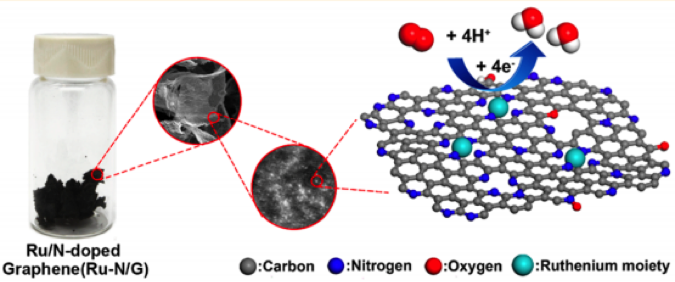Reports: DNI556256-DNI5: Study of Petroleum-Related Heterogeneous Catalysis via Correlated Fluorescence and Electron Microscopy
Emilie Ringe, PhD, William Marsh Rice University
Since Sept. 1, 2016, the PI, Dr. Ringe, has led a team of 2 undergraduate students, one graduate student (supported by NSF), and two postdoctoral associates in a quest for developing a fluorescence tag for the in-situ, single particle tracking of catalytic events. The progress made on this project, as well as the contribution made to other catalysis projects are described here.
Fluorescence is an important tool for studying the dynamics of catalysis. Non-fluorescent molecules that become fluorescent during a catalyzed reaction have previously enabled the monitoring of catalytic events at the single turnover level. We found a fluorophore appropriate ammonium, a non-fluorescent molecule, from the Pd-on-Au catalyzed reduction of nitrite to ammonium. The selection of this fluorophore consumed a few months, as matching the right (stable) molecule with the right reaction conditions has proven challenging. So far, we have observed enhanced fluorescence with ammonium/fluorophore in the presence of a thiol or cyanide because it yields a fluorescent product. Results in bulk solution and on a monolayer of supported catalyst show that, given proper optimization of the pH and placement of cyanide/thiols, this can be used as a turn-on dye to monitor ammonium production during catalyzed nitrite reduction. The objectives of year 2 are to optimize the conditions to obtain single particle or near-single particle information, and publish these results.
Other systems highly relevant to catalysis have been explored, enabling the PI to forge lasting collaborations; one paper on such systems was published in the reporting year; the PI is one of the corresponding author. Prof. Jim Tour recently synthesized Ru-doped graphene that shows an excellent catalytic profile for the ORR. The Ringe group has investigated the atomic structure of this catalyst and observed that most sites are single Ru atom sites (Fig. 1, center red circle), an important discovery for the mechanistic understanding of this catalyst, and future design of other systems.
Figure 1. Single-atomic ruthenium catalytic sites on N-doped graphene for ORR.
The instrumental approaches, including fluorescence spectroscopy and correlation of optical and electron microscopy, developed through this project have attracted additional collaborators seeking her expertise. One such collaboration is the study of fluorescent-functionalized plasmonic nanoparticles, a system developed by the Landes lab to achieve super-resolution imaging. We used our electron microscopy approaches to decipher the structural characteristics of the fluorescent nanoparticles, and found that differences in coating thickness have a major impact on their fluorescence response. Further, we were able to pinpoint and image single nanoparticles and correlate their orientation and shape with the observed super-resolution fluorescence signal.
Students and postdocs funded under this grant have gained significant experience, and one of the postdoctoral fellow involved in the project (Anthony Stender) obtained a tenure-track faculty position at the University of Ohio, thanks in part to his optical spectroscopy knowledge.












